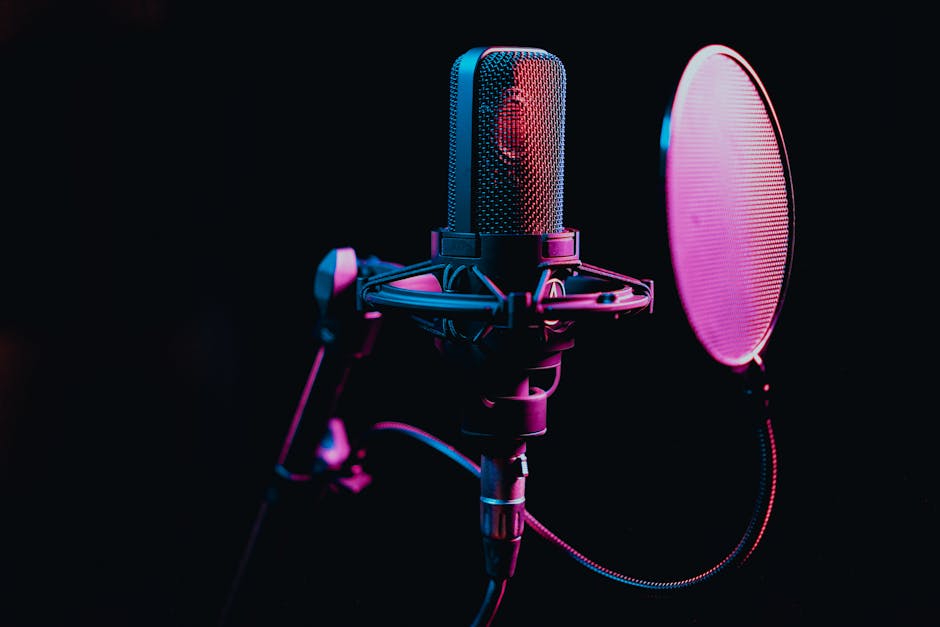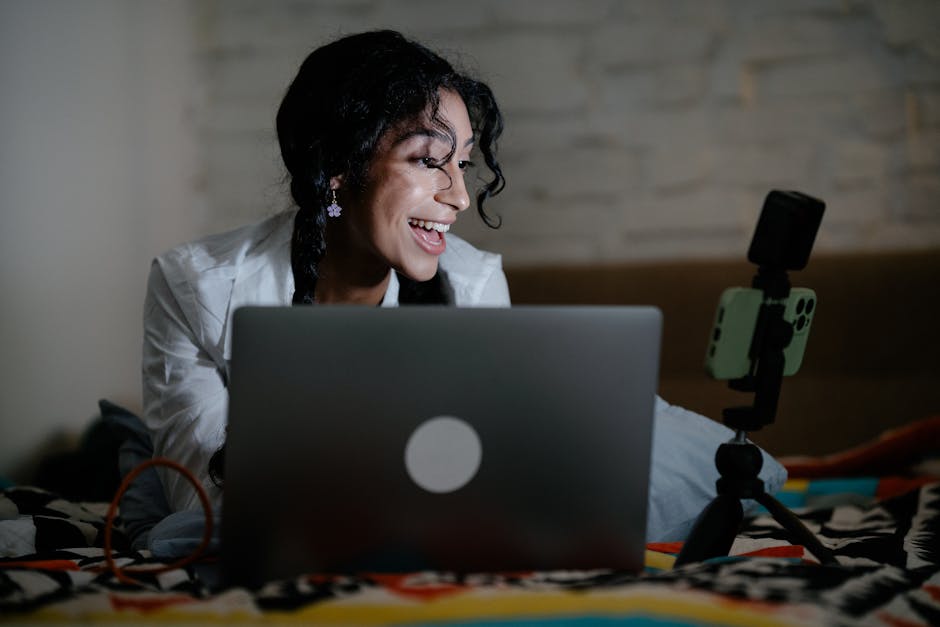How I Use Royalty-free Music and Sound Effects in My Podcasts.
How I Use Royalty-free Music and Sound Effects in My Podcasts
In the bustling world of podcasting, where every voice vies for attention, it’s not just what you say but how you say it that truly captivates an audience. For me, the secret sauce to a truly immersive and professional podcast experience lies beyond just clear narration. It’s in the subtle swells of background music, the perfectly timed sound effects, and the overall sonic landscape that transports listeners. But here’s the kicker: achieving this doesn’t require a Hollywood budget or a team of sound engineers. My cornerstone for building rich audio environments? Thoughtfully selected royalty-free music and sound effects.
Over the years, I’ve honed a specific approach to integrating these audio assets, turning what could be a legal minefield or a tedious chore into a powerful creative tool. This isn’t about generic background noise; it’s about crafting an auditory identity that resonates with my podcast’s theme, enhances storytelling, and keeps listeners coming back for more. Let me walk you through my personal journey and methodology.
My Guiding Principles for Picking Podcast Audio
When I embark on a new podcast episode, the audio selection process isn’t an afterthought; it’s an integral part of the creative journey. My first principle is always about consistency and brand identity. Just as a visual brand has a color palette and font, my podcast has a sonic signature. This means I’m not just grabbing any catchy tune; I’m looking for music that aligns with the overall tone, theme, and emotional arc of my show.
For instance, if my podcast focuses on true crime, I lean towards ambient, slightly suspenseful, or melancholic tracks. If it’s a lighthearted conversational show, I’ll seek out upbeat, quirky, or mellow tunes. This isn’t a one-time decision; it’s a continuous filter I apply to every piece of audio I consider. I aim for a cohesive sound that listeners can instantly recognize and associate with my content.
Defining the Right Mood and Energy
Beyond brand, the immediate mood and energy of a specific segment are paramount. I ask myself: “What emotion do I want to evoke here?” Is it excitement for an upcoming interview? A sense of calm during a reflective moment? Or perhaps tension leading up to a big reveal? Royalty-free libraries offer an incredible breadth of genres and moods, from cinematic scores to quirky ukulele jingles. I spend considerable time browsing, not just listening to the first few seconds but letting tracks play out to understand their full dynamic range.
Another crucial aspect is quality and clarity. Even if a track perfectly fits the mood, if it sounds poorly recorded or has noticeable artifacts, it’s a hard pass. My listeners deserve pristine audio, and that extends to every single element I include. I prioritize sources that offer high-fidelity files, typically WAV or high-bitrate MP3s, to ensure a professional finish. This attention to detail contributes significantly to the perceived professionalism and overall listener experience of my podcast.

Weaving Music and SFX into My Podcast’s Narrative Fabric
This is where the magic truly happens – taking individual audio elements and integrating them seamlessly into the podcast’s flow. It’s not just about slapping a song at the beginning and end; it’s about using sound to guide the listener, emphasize points, and enhance the narrative.
My intro and outro music are perhaps the most recognizable sonic elements of my show. They serve as a sonic bookend, signaling the start and end of each episode. I’ve chosen specific tracks that are memorable, energetic (for the intro), and contemplative (for the outro), and I use them consistently. This creates a powerful sense of familiarity and routine for my regular listeners.
Beyond Bookends: Transitions and Background Beds
But the usage doesn’t stop there. I frequently use short musical stings or sound effects as transitions between segments. A subtle whoosh, a brief musical flourish, or a gentle fade-out/fade-in of a background track can smoothly bridge topics, prevent jarring cuts, and maintain listener engagement. For instance, moving from a serious discussion to a lighter segment might involve a quick, upbeat musical interlude.
Background music, or “beds,” are another powerful tool. I use them sparingly and strategically during monologue sections or when introducing a new topic. The key here is subtlety. The music should always support the spoken word, never overshadow it. I typically keep background music at a very low volume, often ducking it even further when I’m speaking, ensuring my voice remains the primary focus. The goal is to add atmosphere, not distraction. Think of it as the underscore in a film – it’s there, you feel it, but it doesn’t compete with the dialogue.
The Art of Using Sound Effects for Storytelling
Sound effects (SFX) are where I truly get to play. They’re not just for explosions or car chases; in podcasting, they can be incredibly effective for adding realism, humor, or emphasis. For example, in an episode discussing a historical event, a faint, distant clock chime might evoke a sense of time passing. If I’m recounting a humorous anecdote about a clumsy moment, a subtle “bonk” or “slide whistle” can heighten the comedic effect without being overbearing.
I’ve used the sound of a gentle rainfall to create a cozy, introspective mood, or the distinct ring of an old-fashioned telephone to signal a historical reference. The trick is to use them purposefully and sparingly. Overuse can make a podcast sound amateurish or cluttered. Each SFX must earn its place, directly contributing to the narrative or emotional impact. This careful application transforms a simple audio track into a rich, multi-layered auditory experience, enhancing the overall storytelling and making the content more memorable.
Navigating the Licensing Maze: My Approach to Staying Compliant
One of the biggest anxieties for podcasters using music and sound effects is legal compliance. This is precisely why I exclusively use royalty-free audio. It eliminates the complexities and costs associated with traditional music licensing, allowing me to focus on creation rather than copyright headaches. However, “royalty-free” doesn’t mean “free of rules.” It means you pay once (or sometimes, it’s free with attribution) and can use the audio in your projects according to the specific license terms.
My first step is always to understand the specific license of any audio file I download. There are various types, even within the royalty-free umbrella. Some require attribution (e.g., Creative Commons licenses), meaning I must credit the creator in my show notes or episode description. Others are completely free for commercial use with no attribution required, usually obtained through paid subscriptions to stock audio libraries.
My Go-To Sources for Royalty-Free Audio
I rely on a few trusted platforms for my audio needs. For paid subscriptions, I use services like Epidemic Sound or Artlist. These platforms offer vast libraries of high-quality music and SFX with straightforward licensing – typically, a monthly or annual fee grants unlimited use across all my projects, including commercial podcasts. This peace of mind is invaluable.
For free options, I sometimes turn to sites like Freesound.org or the YouTube Audio Library. However, these often come with more restrictive licenses (like specific Creative Commons versions) that require careful review. I always double-check the terms for each individual asset, particularly regarding commercial use and attribution requirements. I also make it a habit to download and save the license information alongside the audio file in my project folders. This way, if there’s ever a question, I have immediate proof of my rights to use the material. Staying organized is key to avoiding future legal issues.
My Essential Toolkit and Workflow for Seamless Audio Integration
A great audio experience isn’t just about selecting the right sounds; it’s also about how they’re mixed and mastered. My workflow is streamlined to ensure efficiency without sacrificing quality.




Post Comment